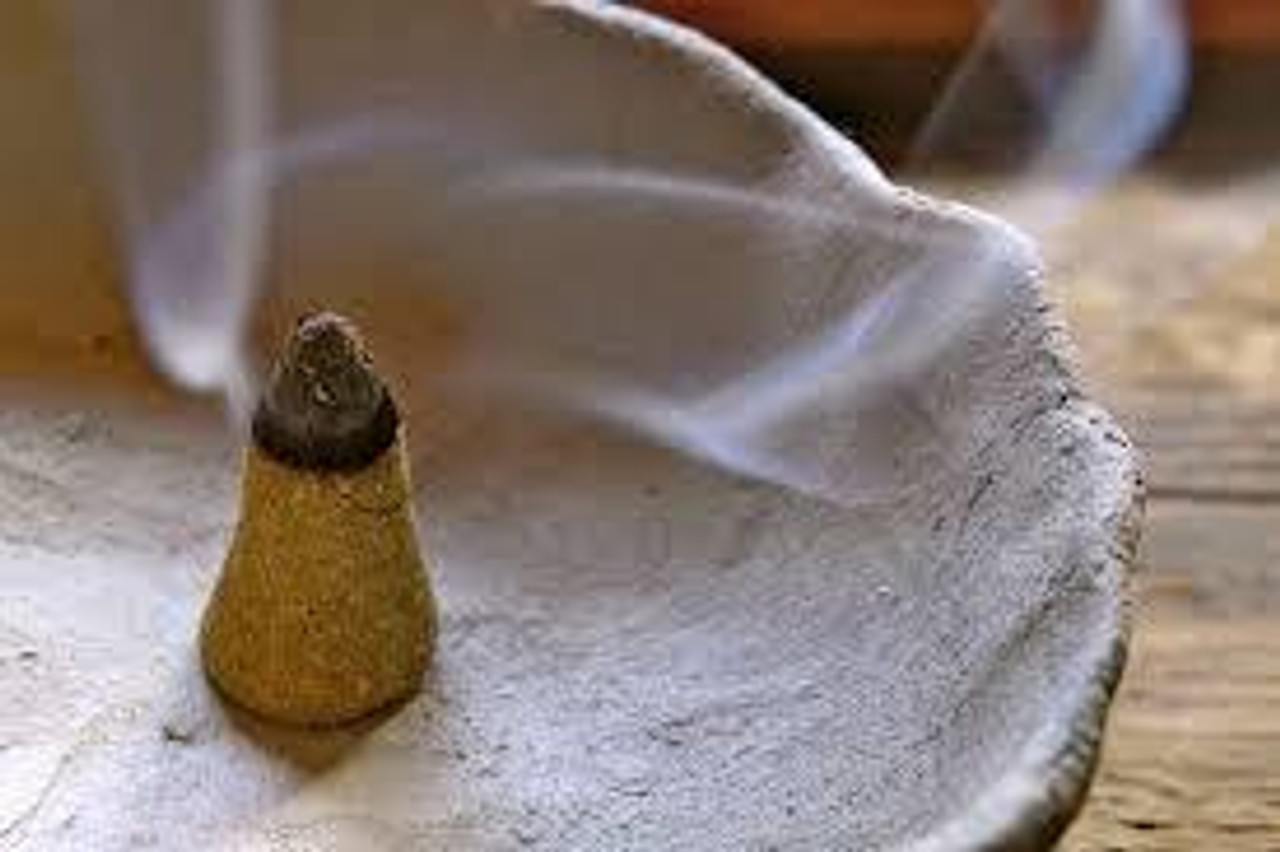
Incense cones are simply conical shaped masses of hardened incense. Like stick incense, incense cones come in numerous varieties based on the diverse combination of ingredients. Incense cones emit a somewhat different smell than the stick variety because there is no stick burning alongside the actual raw ingredients. While incense cones may be somewhat less popular that incense sticks, they still possess a loyal following. Incense cones are generally used less in Western areas, but have very strong followings in locales like India.
Incense cones are burned to release the fragrance of the botanical, aromatic material from which they are composed. They burn fairly rapidly after being lit, and emit more smoke and fragrance as the point dwindles down and the ember reaches the base. Incense aficionados have created a cornucopia of incense cones with different scent profiles. The adventurous will find incense cones alluring for their purity and creative inspiration. Incense cones are selected and burned for relaxation and to create a pleasing and inviting environment in the home or office. Incense cones are also often incorporated in Hindu and Buddhist ceremonies, and elsewhere for its therapeutic benefits.
Incense is said to have originated many thousands of years ago. Over time, the practice of burning incense spread to the sprawling metropolises of the great civilizations. There are countless assortments of incense (including stick incense, resins, and powders); incense cones were popularized by the Japanese and were first introduced at the World’s Fair in the late 1800's. Some common incense scents used for incense cones come from essential oils, resins, roots, flowers, leaves, seeds, fruits, and gums. Inexpensive, artificial scents can also be formed through man-made, chemical processes but are decidedly less popular and effective.
Incense cones have become increasingly popular as more and more people have come to realize their benefits and nuanced differences from stick incense. While still relatively difficult to procure, incense cones have made significant headway in accessibility in recent years as interest in holistic practices and aromatherapy continues to build. Incense cones are attractive to the senses and are pleasing to the eyes and nose. Depending on their composition, incense cones emit either intense or soft aromatic fragrances used to enhance the scent of a room in general or as a sensory accompaniment to meditation yoga or religious practice. It is generally preferred to use all natural incense cones when engaging in these practices versus any that are synthetic or man-made.
How to Burn Incense Cones
There is a bit of an art to using incense cones. It is not quite as straightforward as lighting the wick of a candle and letting it burn. The process of burning incense cones encompasses a few additional steps and a bit of knowledge is vital to achieving the best results. Unlike cored incense sticks, incense cones bun all the way down. Because of that, it is important to select a safe incense burner or holder which can handle having the embers of the burning incense cone pressed against it. Brass burners accommodate incense cones well and are available in a wide variety of shapes and sizes. It is absolutely important that the burner have ample room to place the cone inside while leaving room to capture the residue and ash from the cone. Many types of incense burners exist which would be sufficient for burning incense cones from everything to porcelain to soapstone. It is very important to remember that incense cones burn all the way down into nothingness. As a result, the embers of the cone will have contact with the base of the holder as the cone burns down. If the base material cannot tolerate the embers, it will very likely become mangled in the effort. Many people use stop-gap measures for lack of a proper incense holder. A quarter or metal disc can provide a flat surface for a burning incense cone, but it important to remain attentive to the burning object and put safety above else.
While not always necessary, it is a common practice to place a small amount of sand, rice, or grain into the bottom of the incense burner to improve the safety of the process. The sand, rice or grain should be evenly smoothed so that the base of the cone rests flat on top of the granules. The particles at the base help improve the airflow in the burner and reduce heat conduction throughout the surface or base of the incense burner. This reduces the risk of the container cracking due to the extensive heat generated in the process.
After lighting the incense cone’s point using a match or lighter, it is important to allow 5 to 20 seconds to pass before snuffing out the flame. The flame must be allowed to catch in order to light the embers in the cone. Once it is blown out, a wafting spiral of smoke emanating from the tip of the incense cone signals the embers have caught and the cone is beginning to burn. The cone should be carefully secured within the burner and if the burner has a lid, should be covered up as necessary. The incense cone should be allowed to burn for as long as you want, usually until its aroma has thoroughly pervaded the room. Always exercise caution and take special care to reduce the risk of fire. Do not burn incense cones near easily combustible items and remove any loose items that could potentially be flammable.